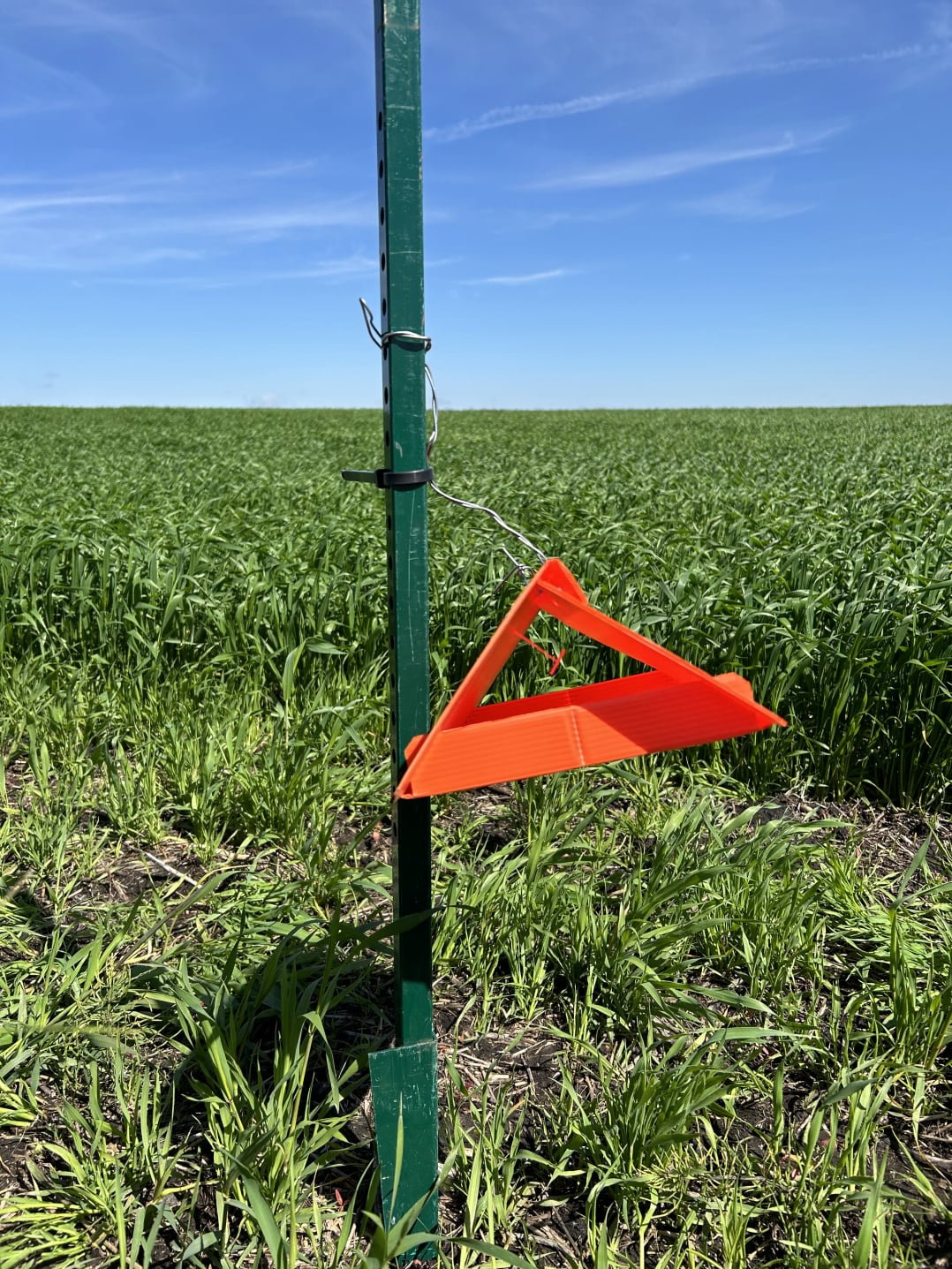
Wheat midge trap
With the cool, wet conditions we have had so far this growing season, wheat midge (Sitodiplosis mosellana) may become a concern. Adults are small (approximately 3 mm in length), orange, with long legs and antennae[1]. The adults emerge in late June or early July from overwintered larvae in soil[2]. These larvae can survive several years in the soil, waiting for the right soil moisture conditions, greater than 22 mm of rain in May or June, to fully develop[1]. The adults proceed to lay eggs in wheat heads. Warm, calm evenings during July are ideal for egg laying[2]. When the eggs hatch, the larvae feed on the developing kernels before they drop to the soil surface and begin the cycle again[1].
Feeding damage results in aborted, and damaged kernels that lowers grain quality, grade and yield[1]. Damaged kernels can often look similar to damage caused by frost or drought[2].
This year, Prairie Giants are participating in #MidgeBusters, a wheat midge monitoring network of traps across Western Canada to determine field scouting timing and presence of midge. A growing degree day development model can also be used to determine when adult wheat midge may start emerging. Wheat is the most vulnerable from heading till anthers (flowers) are present on the heads. Scouting should take place during these growth stages in evenings when midge is most active[1]. To scout, count the number of wheat midge adults on 4-5 wheat heads at a couple different areas in the field. Threshold is 1 or more adult per 4-5 heads to prevent yield loss, or 1 or more adults per 8-10 heads to prevent grade loss[1].

Wheat midge trap
Insecticide options for controlling wheat midge are limited, but there are many cultural methods to help prevent damage caused by the pest. Cultural methods include:
1. Growing a midge tolerant wheat variety, also known as varietal blends (VB). According to the MASC 2023 Variety Market Share Information, 38.5% of red spring varieties sown in Manitoba was midge tolerant. The top 3 varieties included AAC Starbuck VB, AAC Wheatland VB and AAC Hodge VB[3].
2. Crop rotation – six row barley and oats are naturally tolerant[1].
3. Seeding early/seeding early varieties allows varieties to pass vulnerable growth stages prior to peak midge emergence[2].
4. And finally, to a lesser extent, natural predators and parasites of wheat midge including parasitic wasps and ground beetles[1].
If an insecticide application is crucial, dimethoates (Lagon, Cygon) are the only registered class. These should be applied in the evenings when adults are most active[2], and as soon as action threshold is met as the window to control adults is small, and the insecticide does not control immature forms (eggs, larvae)[2],[4]. Once wheat is flowering, the critical window has passed, and an application of insecticide is no longer economical or necessary. The spray application timing for wheat midge is prior to fungicide timing.
Follow along on Twitter/Facebook as we monitor midge emergence!